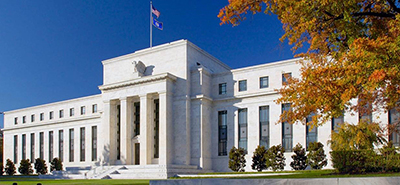
Fed Keeps Rates Steady But Options Open

(Federal Reserve headquarters, Washington, D.C.)
The Federal Open Market Committee held rates steady at its June meeting but kept its options open for July and later this year.
“The Committee seeks to achieve maximum employment and inflation at the rate of 2 percent over the longer run,” the FOMC said in a statement. To reach these goals, the committee decided to maintain the target range for the federal funds rate at 5 to 5-1/4 percent. “Holding the target range steady at this meeting allows the Committee to assess additional information and its implications for monetary policy,” the statement said.
MBA Senior Vice President and Chief Economist Mike Fratantoni noted inflation is coming down, but slowly. “Multiple indicators suggest the economy here and abroad will slow significantly in the near term, but the job market continues to appear resilient in the most recent data,” he said. “With this muddled picture, it is not surprising that the FOMC held rates steady at its June meeting but kept their options open for July and later this year. Nevertheless, we expect that the Fed is at the top of its rate hiking cycle.”
Michele Raneri, vice president and head of U.S. research and consulting at TransUnion, Chicago, called the pause an indicator the Fed wants to give the previous hikes time to have an observable impact, specifically on inflation. “It remains to be seen what happens in months to follow, but for June at least, borrowers could see somewhat of a stabilization of rates across a range of industries, in particular, mortgages and credit cards,” she said.
Raneri noted mortgage consumers may be buoyed by the news that interest rates are holding steady, at least for now, at a time where a $300,000, 30-year 6.8% fixed-rate mortgage now sees monthly payments in the range of $1,956, up from $1,297 at the 3.2% rates seen in January 2022. “However, it remains to be seen if, in the short term, this will spur many who have been holding off to finally engage in a new purchase or refinance, or if they will continue waiting until rates begin dropping,” she said.
Fratantoni said new economic projections show that the median FOMC member expects two additional hikes by the end of the year. “Unfortunately, this only adds to the chances that the economy will slow sharply,” he said. “Given the banking challenges that have already resulted in a tight credit environment, the threat of further hikes, baked into medium-term rates today, will only further slow economic activity. We expect that economic conditions will develop in such a way that further hikes are not needed, but this new information impacts markets immediately.”
Fratantoni also noted mortgage rates have generally increased in the past month, which has slowed the pace of housing market activity as potential homebuyers have been very sensitive to any changes in rates this year. “We expect that mortgage rates will drift down over the second half of the year as the economy slows and the Fed reacts accordingly by holding off on further rate hikes,” he said.
The full FOMC statement:
Recent indicators suggest that economic activity has continued to expand at a modest pace. Job gains have been robust in recent months, and the unemployment rate has remained low. Inflation remains elevated.
The U.S. banking system is sound and resilient. Tighter credit conditions for households and businesses are likely to weigh on economic activity, hiring, and inflation. The extent of these effects remains uncertain. The Committee remains highly attentive to inflation risks.
The Committee seeks to achieve maximum employment and inflation at the rate of 2 percent over the longer run. In support of these goals, the Committee decided to maintain the target range for the federal funds rate at 5 to 5-1/4 percent. Holding the target range steady at this meeting allows the Committee to assess additional information and its implications for monetary policy. In determining the extent of additional policy firming that may be appropriate to return inflation to 2 percent over time, the Committee will take into account the cumulative tightening of monetary policy, the lags with which monetary policy affects economic activity and inflation, and economic and financial developments. In addition, the Committee will continue reducing its holdings of Treasury securities and agency debt and agency mortgage-backed securities, as described in its previously announced plans. The Committee is strongly committed to returning inflation to its 2 percent objective.
In assessing the appropriate stance of monetary policy, the Committee will continue to monitor the implications of incoming information for the economic outlook. The Committee would be prepared to adjust the stance of monetary policy as appropriate if risks emerge that could impede the attainment of the Committee’s goals. The Committee’s assessments will take into account a wide range of information, including readings on labor market conditions, inflation pressures and inflation expectations, and financial and international developments.
Voting for the monetary policy action were Jerome H. Powell, Chair; John C. Williams, Vice Chair; Michael S. Barr; Michelle W. Bowman; Lisa D. Cook; Austan D. Goolsbee; Patrick Harker; Philip N. Jefferson; Neel Kashkari; Lorie K. Logan; and Christopher J. Waller.
